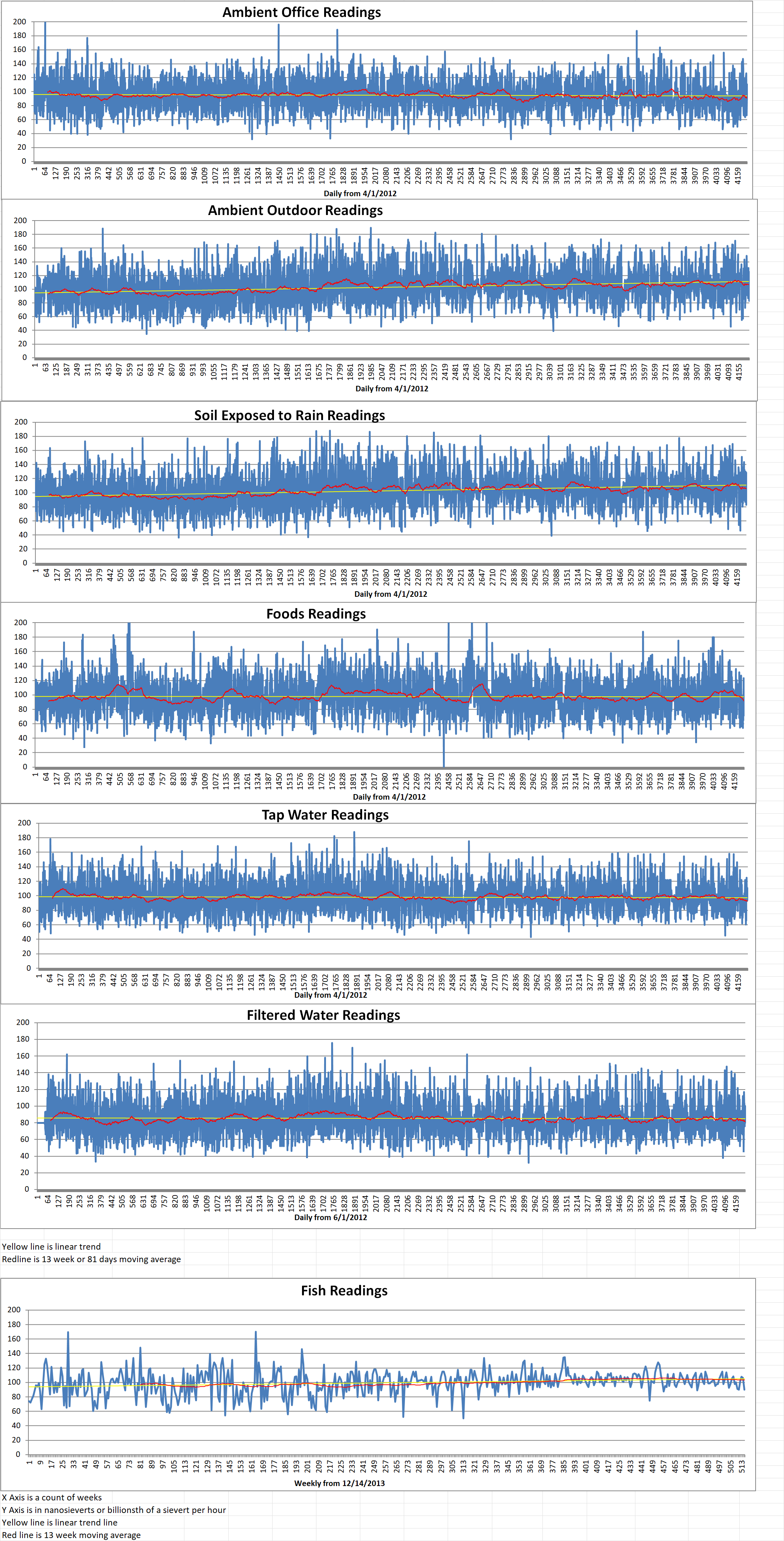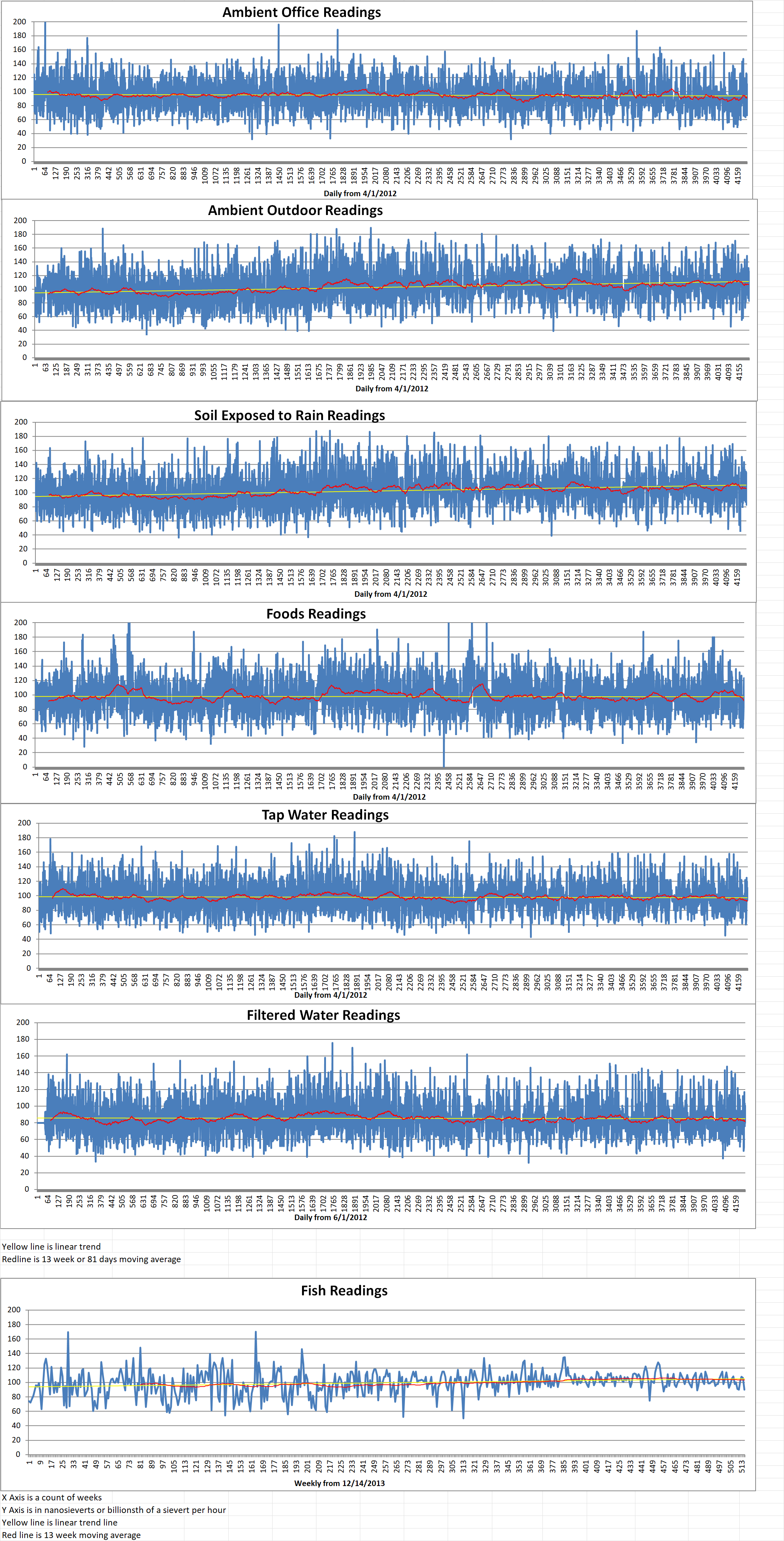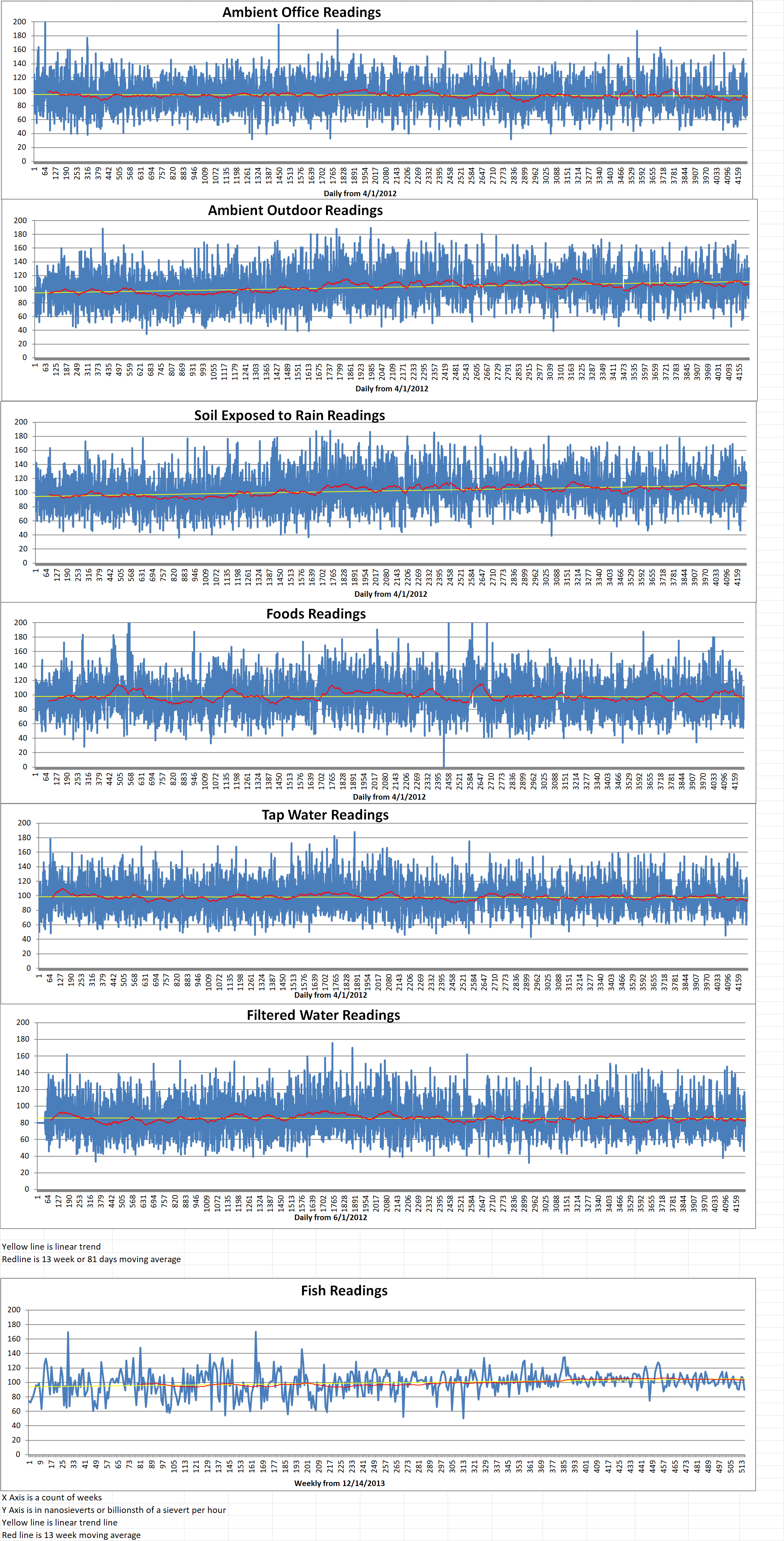A new online tool is allowing people to see how radioactive contamination is moving through plumes underground at Hanford, Washington, and other U.S. Department of Energy sites across the country.
At Hanford, millions of gallons of radioactive liquid waste and many toxic chemicals leaked into the ground water from production of plutonium during World War II and the Cold War. Much of the radioactive liquid and toxic chemicals was dumped or injected into the ground in cribs, pits, trenches and injection wells, according to the Washington State Department of Ecology.
Primary contaminants of concern in the soil and ground water under Hanford include uranium, technetium-99, iodine-129, tritium, carbon tetra chloride, chromium, nitrates and strontium-90.
The newly developed online tool is called Tracking Restoration And Closure (TRAC). It maps the plumes and visualizes them as animations on a screen for viewers. Near the Columbia River, blobs of color move and expand depending on treatment of the radioactive plumes.
April Kluever is the Acting Director of Subsurface Closure at DoE Headquarters. She said, “I could imagine somebody who lives along the Columbia River, either as a new resident, new to the area, or they’ve lived there for a while… perhaps they read a newspaper article or they have something that sparks their interest, and they want to know more. There’s this site, Hanford. Or I heard about this in (the movie) Oppenheimer, Hanford. You can go to TRAC and you can learn all of the information.”
Kluever said that all of the data is being uploaded across the DoE complex, and the data updates of the TRAC program will soon be done every year across the Hanford complex.
The tool shows which remediation technologies are being used, where the contaminated radioactive plumes are going and what progress has been made. It will even display the groundwater standard that the U.S. Department of Energy (DoE) is trying to meet, and the concentration of radioactive contamination in the plume.
Kluever said. “We have some of the most complex cleanup scenarios in the world, and we know that. We are instituting some of the most cutting-edge technologies to address these most complex scenarios in the world.”
Kluever added that people cleaning up other public or private environmental sites might be able to use the map as a resource, to help understand new technologies that are available, she said.
A three-dimensional view of the map is not available yet. However, the DoE is interested in making the map even more useful in the future, Kluever added.
Kluever went on to say that the DoE hopes to use a similar sort of tool to show soil and closed Hanford tanks of radioactive waste that are being cleaned up in the future.
“We started with groundwater because we had a lot of data and it was relatively easy to show in a visual platform like this,” Kluever said.
The TRAC system cost about $750,000 to start up from 2018 through 2023, and costs as much as $50,000 to maintain each year.
Blog
-

Radioactive Waste 929 – New Online Tools Shows Plumes Of Radioactive Contamination In Ground Water Under Hanford
-
Nuclear News Roundup April 15, 2024
The Latest | World leaders call on Iran and Israel to avoid allowing conflict to worsen apnews.com
Kozloduy NPP gets first delivery of Westinghouse nuclear fuel seenews.com
Meetings set on Xcel Energy’s Prairie Island Nuclear Plant proposal republicaneagle.com
Second tier of containment installed for BREST-OD-300 world-nuclear-news.org
-

Geiger Readings for April 15, 2024
Ambient office = 93 nanosieverts per hour
Ambient outside = 93 nanosieverts per hour
Soil exposed to rain water = 92 nanosieverts per hour
Hierloom tomato from Central Market = 72 nanosieverts per hour
Tap water = 96 nanosieverts per hour
Filter water = 89 nanosieverts per hour
-
Nuclear News Roundup April 14, 2024
U.S. To Place Nukes Near Russian Border? NATO Nation Says ‘Ready To Host Nuclear Weapons As… hindustantimes.com
Nuclear waste storage facility told to take action after breach bbc.com
Russia to Increase Its Security if Poland Hosts Nuclear Weapons telesurenglish.net
Israeli attack on nuclear sites to prompt tit-for-tat, pursuing nukes: Iran Aljazeera.com
-

Geiger Readings for April 14, 2024
Ambient office = 111 nanosieverts per hour
Ambient outside = 83 nanosieverts per hour
Soil exposed to rain water = 83 nanosieverts per hour
Garlic from Central Market = 123 nanosieverts per hour
Tap water = 111 nanosieverts per hour
Filter water = 100 nanosieverts per hour
-

Geiger Readings for April 13, 2024
Ambient office = 100 nanosieverts per hour
Ambient outside = 126 nanosieverts per hour
Soil exposed to rain water = 128 nanosieverts per hour
English cucumber from Central Market = 111 nanosieverts per hour
Tap water = 94 nanosieverts per hour
Filter water = 80 nanosieverts per hour
Dover Sole from Central = 90 nanosieverts per hour
-

Nuclear Reactors 1370 – Corruption Grows In The Nuclear Industry
In their zeal to achieve a reduced carbon environment, Democrats have been promoting nuclear energy as a safe, clean energy source. Some states are moving as quickly as they can to reactivate idle reactors. In 2022, Congress passed the Inflation Relief Act (IRA) which contained a provision to provide thirty billion dollars for nuclear subsidies.
Scandals involving bribery over nuclear energy have brought down high-level state officials and corporate executives in Ohio, Illinois and other places.
In 2020, federal prosecutors presented charges against officials of Commonwealth Edison (ComEd), an Illinois company. They were charged with offering jobs and favors to friends of the Speaker of the Illinois House of Representatives in exchange for a bill to bailout the company’s nuclear division.
At about the same time, Ohio-based FirstEnergy executives were charged with paying sixty million dollars in bribes to state legislators. Former Ohio Speaker of the House Larry Householder is currently serving a forty-seven-year prison sentence.
Floodlight is a non-profit environmental news service. They published a piece in the liberal magazine Mother Jones that perfectly showcases the corruption in the nuclear industry. The article said, “Utility fraud and corruption—in Florida, Illinois, Mississippi, Ohio, and South Carolina—have cost electricity customers at least $6.6 billion, according to Floodlight’s analysis. Ratepayers have bankrolled nuclear plants that never got built, transmission systems that were over-engineered to beef up profits, and aging coal facilities that couldn’t compete with cheaper plants powered by methane, which the industry calls natural gas.”
Before these scandals developed, and before Congress passed the Inflation Recovery Act, the nuclear industry had become so unpopular that it was a tempting target for political corruption.
The Bulletin of Atomic Scientists said, “Changes in the economics of electricity markets are threatening the profitability of nuclear power plants, a shifting reality driving a demand for these financial bailouts. As the New Jersey-based energy company Public Service Enterprise Group (PSEG) explained in October 2020, across the nation “nuclear plants continue to struggle economically to survive. Since 2018, three nuclear plants have closed in the eastern US, all for economic reasons, and the impact has had a ripple effect.”
Over the past few years, the U.S. Justice Department and the courts have carried out their jobs in prosecuting and sentencing bad actors in the nuclear industry. Now, it is time for Congress to investigate the root causes of the corruption. Executives and experts from the nuclear industry must be brought before congressional committees to explain why their industry has been allowed to fall into corruption at the expense of the taxpayer and the consumer.
Congress must fulfill its investigative role and discover why this corruption keeps happening. The first witness called to testify should be the Secretary of Energy, Jennifer Granholm. She should inform members of the House and Senate why uncompetitive nuclear plants are being propped up. If they cannot compete, they should be shuttered.
The head of the Nuclear Regulatory Commission (NRC) should be pressed to give a full accounting of all nuclear reactors in the U.S. This account should include how many are in working order.
Former Ohio Speaker Larry Householder should be brought before the committee in his prison jumpsuit to explain why bribery was thought to be a solution to inefficient energy.
State governors should be asked to explain their plans for providing energy to their states if a particular source is no longer viable.
The list of those responsible for the growth of corruption in the nuclear industry is long. However, more needs to be done than simply punishing the criminals. Congress must take the lead in finding out why an unreliable and dangerous energy source is ripe for corruption. -
Nuclear News Roundup April 12, 2024
US / Constellation Applies To Operate Dresden Nuclear Station Until 2051 nucnet.org
Framatome, KHNP to cooperate on medical isotope production world-nuclear-news.org
Inner containment in place at Tianwan 8 world-nuclear-news.org
Price tag for Poland’s first nuclear plant may reach $37bn globalconstructionreview.com
-

Geiger Readings for April 12, 2024
Ambient office = 66 nanosieverts per hour
Ambient outside = 123 nanosieverts per hour
Soil exposed to rain water = 122 nanosieverts per hour
Blueberry from Central Market = 87 nanosieverts per hour
Tap water = 101 nanosieverts per hour
Filter water = 93 nanosieverts per hour
